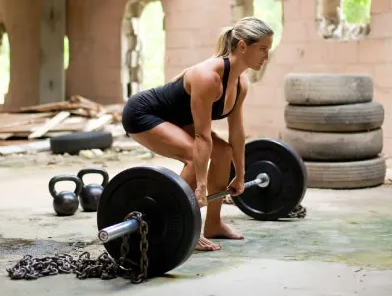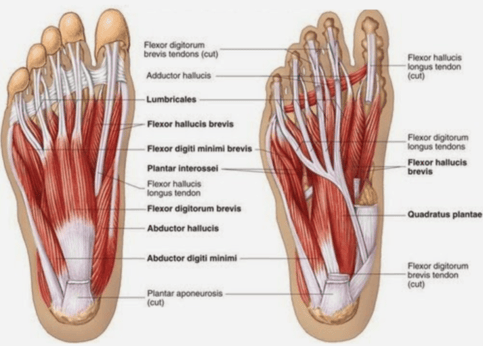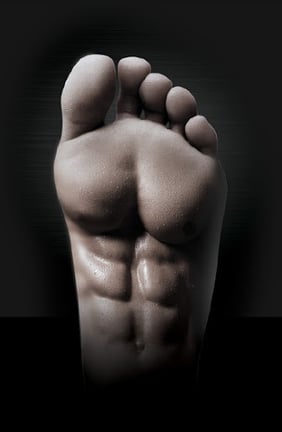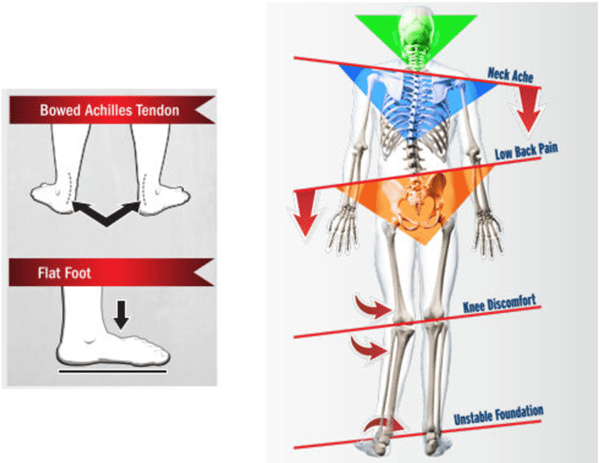Barefoot Training to Lift Heavier & Correct Mechanics
Ditching Your Shoes May be the Key to Fixing Imbalances, Improving Performance, and Lifting Heavier
Toss that $100+ pair of shoes in the trash!
Well no, not exactly… but do set them aside from time to time in order to train your feet to improve your lifts.
You may have seen weightlifters and powerlifters go shoeless at the gym. You may have even given them a side-eye for their “weird” behavior, but there is a very good reason for this. Simply put, going barefoot for lifts such as deadlifts and squats increase your body’s communication with the ground, which then fires up the larger hip muscles to help you drive the movement with more power.
Communication Between The Feet and the Rest of the Body
Proprioception is the sense of your body’s position and orientation. It tells you where your body is in space. The proprioceptive system involves stretch receptors and pressure receptors that are located in our joints, muscles, and skin to help us sense our physical environment. These receptors provide feedback to our brains that helps us move better and appropriately in response to environmental demands. About 70% of the feedback we receive comes from the receptors in our feet.
Shoes are designed with thick shock-absorbing soles to protect our feet from the elements, but by wearing shoes all the time we are reducing our ability to tune in to the sensory feedback from our feet.
The feet provide lots of feedback to the rest of the body, especially when lifting some heavy weights. When you wear cushioned shoes, it dampens (if not stops) that all-important feedback mechanism, which then seriously robs you of making some huge gains. Not only does going barefoot allow your brain to communicate with your feet and the rest of your body, but it also strengthens your feet muscles and increases your stability.
Intrinsic Muscles of the Foot
Within the sole of the foot, there are 10 intrinsic muscles (small muscles inside the foot). Collectively, they function to stabilize the arch of the foot and to individually control the movements of each toe. Whether you are running or lifting, the intrinsics help to stabilize your foot by supporting the arch and providing your body with some valuable information to prepare for and adjust your movements for the demands of the activity. Think of it as the “foot core”.
While the social norm is to wear shoes, and you should wear shoes … shoes serve as external support that your feet grow reliant upon which leads to weakness and tightness of the feet…lazy feet (weak “foot core”).
Benefits of Training Barefoot
Overpronation of the feet (collapse of the arch in the foot) can lead to problems up the kinetic chain of the body.
Greater force production & power delivery through the feet and up the kinetic chain
Ability to perform heavier lifts
Stronger base of support/foundation
Increase proprioception of the feet (better sense of where your body is in space)
Improve balance and overall stability
Improve alignment & decrease impairments up the kinetic chain
Stronger, more flexible, and healthier feet
Expose imbalances to be fixed
While you may not be able to go completely barefoot at the gym for hygienic reasons, wearing just socks may be an option and will still provide you with similar sensory benefits that you just won’t get with shoes. Another option is going for a pair of minimalistic shoes without a big heel-to-toe drop.
So give it a try! Train barefoot and even consider performing plyometrics barefoot as this will challenge your balance and proprioception further while also strengthening the muscles in your feet and your entire leg.
As with any new training regime, there is always a risk of injury even if the risk is low. Speak to your medical professional, such as a physical therapist, about going barefoot to ensure that this is safe for you.
Contact us if you have any questions about this or if you would like to learn how to transition to barefoot training.












